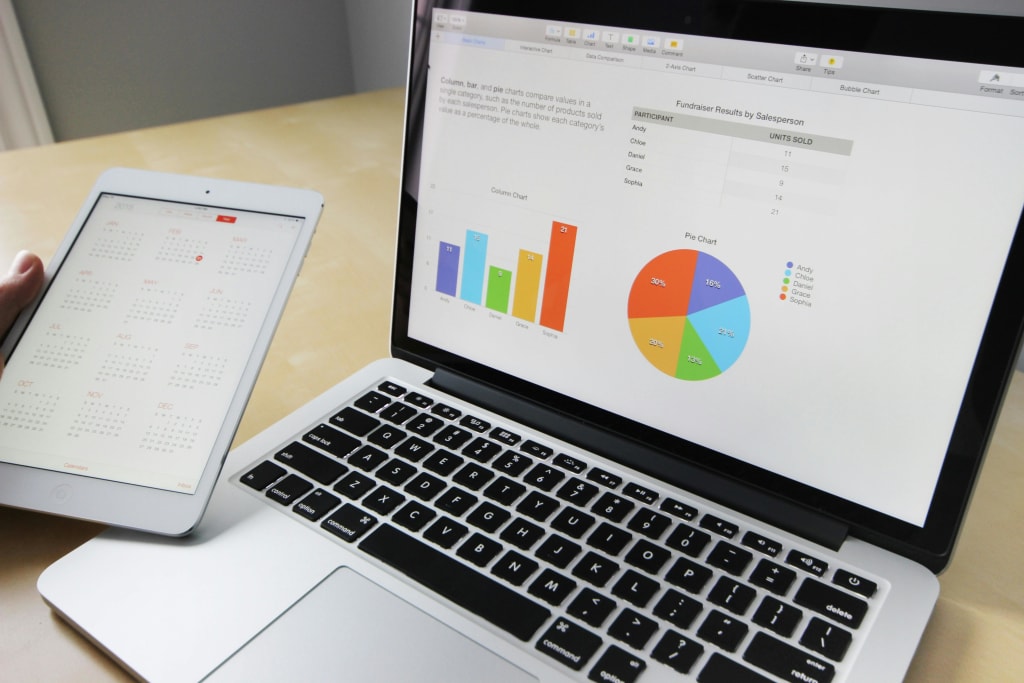IoT and Data Analytics: Leveraging Big Data for Business Insights.
Discover how the combination of IoT and Data Analytics can provide valuable insights for businesses.

Understanding IoT and Data Analytics
Understanding IoT and Data Analytics is essential for businesses looking to leverage big data for insights. IoT, or the Internet of Things, refers to the network of physical devices, vehicles, appliances, and other objects embedded with sensors, software, and connectivity to exchange data. Data Analytics, on the other hand, involves the process of examining large and varied datasets to uncover patterns, correlations, and insights. By combining IoT and Data Analytics, businesses can gain a deeper understanding of their operations, customer behavior, and market trends.
One key aspect of understanding IoT and Data Analytics is the concept of data collection. IoT devices generate a massive amount of data, often in real-time, which can provide valuable insights when analyzed. Data Analytics techniques, such as data mining and machine learning, can be applied to this data to uncover hidden patterns and trends. Additionally, understanding the capabilities and limitations of IoT devices and data analytics tools is crucial for businesses to make informed decisions and drive innovation.
Benefits of Leveraging Big Data in Business
Leveraging big data in business can provide several benefits. One of the main advantages is the ability to make data-driven decisions. By analyzing large volumes of data, businesses can uncover valuable insights that can drive strategic decision-making. These insights can range from identifying new market opportunities to optimizing operational efficiency.
Another benefit of leveraging big data is enhanced customer understanding. By analyzing customer data, businesses can gain insights into customer behavior, preferences, and needs. This information can be used to personalize marketing campaigns, improve customer service, and develop products that better meet customer demands.
Furthermore, leveraging big data can lead to improved operational efficiency. By analyzing data from various sources, businesses can identify inefficiencies, bottlenecks, and areas for improvement. This can result in cost savings, streamlined processes, and increased productivity.
Overall, leveraging big data in business can provide a competitive advantage by enabling data-driven decision-making, enhancing customer understanding, and improving operational efficiency.
Challenges of Implementing IoT and Data Analytics
While there are numerous benefits to implementing IoT and Data Analytics, there are also several challenges that businesses may face.
One major challenge is data security and privacy. With the proliferation of IoT devices and the collection of vast amounts of data, ensuring the security and privacy of this data becomes crucial. Businesses need to implement robust security measures to protect sensitive information and comply with data protection regulations.
Another challenge is the complexity of managing and analyzing large volumes of data. IoT devices generate a massive amount of data, which can be overwhelming to process and analyze. Businesses need to invest in scalable infrastructure and data analytics tools to handle this data effectively.
Additionally, there may be challenges related to data quality and accuracy. IoT devices may generate noisy or incomplete data, which can impact the accuracy of data analysis. Data cleansing and validation processes need to be implemented to ensure the reliability of insights derived from the data.
Lastly, there may be challenges related to organizational readiness and change management. Implementing IoT and Data Analytics requires a cultural shift within the organization, as well as the development of new skills and capabilities. Businesses need to invest in training and change management initiatives to ensure successful implementation.
Best Practices for Utilizing Big Data for Business Insights
To effectively utilize big data for business insights, businesses should follow several best practices.
Firstly, it is important to clearly define the business objectives and questions that need to be answered. By having a clear understanding of what insights are needed, businesses can focus their data analysis efforts and ensure the relevance of the insights obtained.
Secondly, businesses should ensure the quality and reliability of the data being analyzed. This involves implementing data governance processes, conducting data cleansing and validation, and establishing data quality metrics.
Thirdly, businesses should invest in scalable infrastructure and data analytics tools that can handle large volumes of data. This includes cloud-based solutions, data storage systems, and data analytics platforms that can handle real-time data processing.
Furthermore, businesses should adopt a data-driven culture and encourage data literacy within the organization. This involves training employees on data analytics techniques, promoting data-driven decision-making, and fostering a culture of experimentation and learning.
Lastly, businesses should continuously monitor and evaluate the effectiveness of their data analytics initiatives. By tracking key performance indicators and analyzing the impact of data-driven decisions, businesses can refine their approach and drive continuous improvement.
Future Trends in IoT and Data Analytics
The future of IoT and Data Analytics holds exciting possibilities for businesses.
One emerging trend is the integration of AI and machine learning with IoT and Data Analytics. By leveraging AI and machine learning algorithms, businesses can automate data analysis, uncover deeper insights, and enable predictive analytics. This can lead to more accurate forecasting, proactive decision-making, and improved operational efficiency.
Another trend is the increased use of edge computing in IoT and Data Analytics. Edge computing involves processing data locally on IoT devices or edge servers, rather than sending it to a centralized cloud-based infrastructure. This allows for real-time data analysis and reduces latency, making it ideal for time-sensitive applications such as autonomous vehicles and industrial automation.
Furthermore, there is a growing focus on data ethics and responsible data usage. As the volume of data collected continues to grow, businesses are becoming more aware of the ethical implications of data analysis. This includes ensuring data privacy, transparency, and fairness in algorithms and decision-making processes.
Overall, the future of IoT and Data Analytics is likely to be characterized by increased automation, real-time processing, and ethical considerations.
About the Creator
Enjoyed the story? Support the Creator.
Subscribe for free to receive all their stories in your feed. You could also pledge your support or give them a one-off tip, letting them know you appreciate their work.






Comments (1)
Thank you for the interesting and delicious content. Follow my story now.